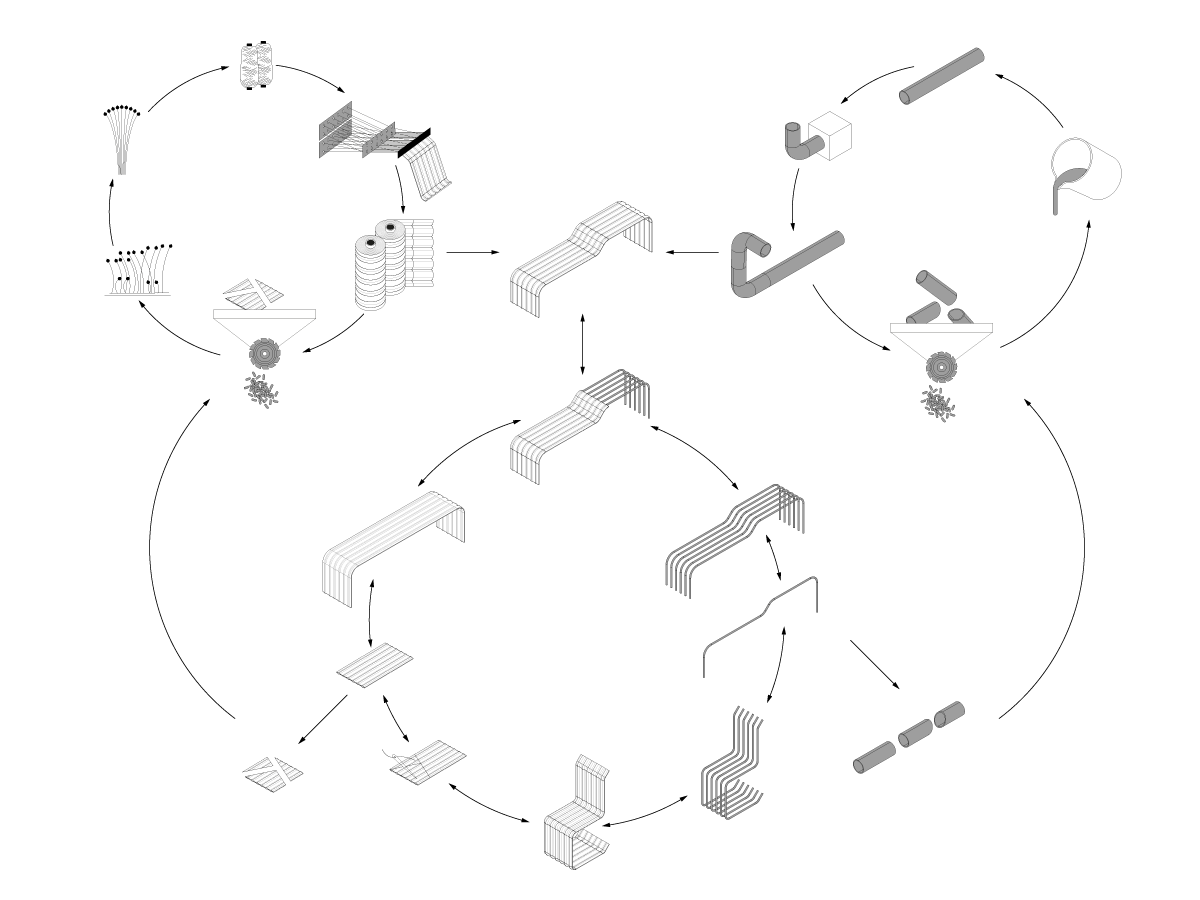LinumTube:
Functionalized flax-fiber multilayer fabric for recyclable furniture with flexible geometry and high level of user-friendliness
Furniture must fulfill diverse requirements. It should be affordable, stable, easy to move house with, aesthetically pleasing and, ideally, flexible in its design. As a result, it often consists of a number of components and materials. With sustainability in mind, the recyclability of furniture is increasingly becoming the focus of attention. The decisive factor here is that the utilized materials can be fully separated by type. In collaboration with the design company Studio Jonathan Radetz, we are developing a furniture system that is comprised of just two materials, each with excellent recyclability: tubular steel and natural-fiber textiles. Thanks to an innovative construction principle and ultra-modern weaving technology, these materials are being used to create furniture and design elements that can be easily dismantled, converted, transported, and recycled to a high standard. We are demonstrating the feasibility of this by means of seating elements for semi-public spaces.

The steel tubes are to be fixed and stabilized solely by the natural-fiber textile. One factor enabling this is the development of a special multilayer fabric made from flax fibers. Channel-like structures are incorporated into this fabric to accommodate the steel tubes. This is accomplished very efficiently, with the fabric being produced in a single process step.
The second key to success is the furniture design itself. Through the innovative shaping and combination of the steel and textile components, stable connections and load-bearing overall constructions can be created - without any adhesives, screwed connections or welded joints whatsoever. The aim is to create a kind of “plug-in system” in which the individual components are pushed into one another. The feasibility of this approach is being investigated within the framework of the project.

Advantages
Disassembly:
Steel and textile can be quickly and easily separated when the item of furniture is being disassembled.
Repurposing:
A holistic design concept allows all or individual steel and textile parts to be combined with one another in different ways. This makes it simple to adjust the dimensions of items of furniture (e.g. enlarging a seating surface). Ideally, it should be possible to build different items of furniture and design elements from a basic contingent of individual parts.
Disposal / material recycling:
Following disassembly, the individual components of a piece of furniture can be sorted by type and can be disposed of in separate recycling scenarios at the end of their useful life.
Last modified:
 Fraunhofer Institute for Wood Research
Fraunhofer Institute for Wood Research 
